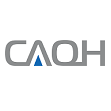From banking to shopping, consumers rely on their mobile devices to manage their personal information, and to add convenience to everyday tasks. To bring this capability to healthcare, last summer, the Centers for Medicare and Medicaid Services (CMS) finalized the Interoperability and Patient Access Final Rule (the “Final Rule”).
The rule is intended to allow Americans to track their health insurance claims and related information on their mobile devices through the app of their choice. This will allow them to see their medical visits, how much their doctor charged, what their health plan paid, prior authorizations, scans, and lab results at any time. And, when a consumer changes health plans, the rule will also allow them to use the app to share their information with the new plan.
To facilitate information sharing, the Final Rule requires plans and app developers to use Fast Healthcare Interoperability Resource (FHIR) application programming interfaces (APIs). FHIR is a standard for exchanging healthcare data developed by the healthcare industry. CMS has mandated that FHIR APIs be in place by January 1, 2021, and will make the rule enforceable by July 1, 2021, which is rapidly approaching.
While this is an opportunity for app developers to bring innovation to healthcare, there is a lot of work that needs to be done to meet these deadlines. Here’s what app vendors need to know:
- What does the Final Rule mean for app developers?
For apps that have been operating in this space, the Final Rule puts some much-needed structure and urgency around healthcare information sharing. It also opens the door for new solutions that will provide a better experience for consumers, and reduce burdens on health plans and providers.
- What laws should app developers and vendors be aware of?
The Final Rule places a strong emphasis on privacy and security. Along with these requirements, a variety of Federal and State laws apply.
Each app will be subject to different laws based on functionality. For example, an app that diagnoses a medical condition will have different requirements than one that collects and stores consumer information. The Federal Trade Commission has created an interactive tool to help determine which federal laws apply to a specific app.
- What potential challenges might an app vendor confront?
Health plans, in particular, are under immense pressure to get the necessary infrastructure in place to meet the deadlines. So, they may be asking their app partners to make adjustments to meet the new requirements — especially around privacy.
Also, today there are more than 300,000 possible connections between third-party apps and health plans. Forging individual relationships between each would be time-consuming, and expensive.
- What is the best way to begin working with health plans?
The best way to ensure that your app is available to, and able to connect with, health plans is by enrolling in the CAQH Endpoint Directory. In addition to making it easier for healthcare organizations and app vendors to connect, by appearing in the directory, developers can demonstrate that they are a technically sound and credible resource to exchange data with.
If health plans and app vendors commit to working together to meet these requirements and improving the consumer experience, the Final Rule could usher in the next generation of healthcare.
To learn more about the CAQH Endpoint Directory, click here.
